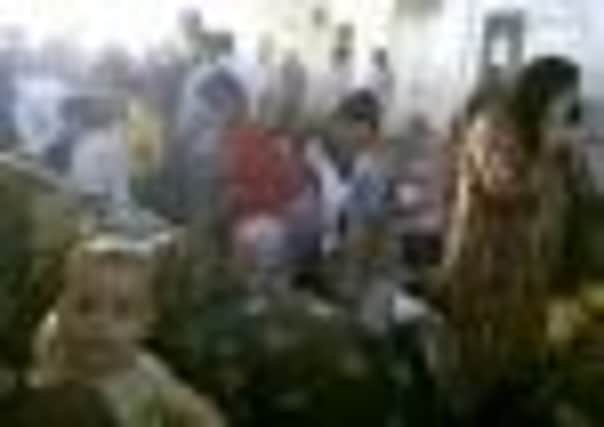Syria insists Tremseh carnage was not an attack on civilians


Syrian foreign ministry spokesman Jihad Makdissi said the violence on Thursday was not a massacre – as activists and many foreign leaders have asserted – but a military operation targeting armed fighters who had taken control of the village of Tremseh.
“What happened wasn’t an attack on civilians,” Mr Makdissi told reporters in Damascus yesterday. He said 37 gunmen and two civilians were killed – a far lower death toll than the one put forward by anti-regime activists, some of whom estimate that more than 100 people were killed.
Advertisement
Hide AdAdvertisement
Hide Ad“What has been said about the use of heavy weapons is baseless,” Mr Makdissi added.
But the United Nations has already implicated president Bashar al-Assad’s forces in the assault. The head of the UN observer mission said on Friday that monitors stationed near Tremseh saw the army using heavy weaponry and attack helicopters.
Although there has been a string of horrific attacks in Syria over the course of the uprising, the violence appears to be escalating. Yesterday, the International Committee of the Red Cross said it now deems the conflict in Syria a civil war, meaning international humanitarian law applies throughout the country.
The Geneva-based group’s assessment is an important reference that helps parties in a conflict determine how much and what type of force they can or cannot use. ICRC spokesman Hicham Hassan said that humanitarian law now applies wherever hostilities are taking place in Syria, where fighting has spread beyond the flashpoints of Idlib, Homs and Hama.
International humanitarian law grants parties to a conflict the right to use appropriate force to achieve their aims. But attacks on civilians and abuse or killing of detainees can constitute war crimes.
On Saturday, UN observers investigating the killings in Tremseh found pools of blood in homes and spent bullets, mortars and artillery shells, adding details to the emerging picture of what anti-regime activists have called one of the deadliest events of Syria’s uprising.
Dozens of people have already been buried in a mass grave, and activists are still struggling to determine the total number of people killed in what they say was a bombardment by government tanks and helicopters on Thursday.
Some of the emerging details suggested that, rather than the outright shelling of civilians that the opposition has depicted, the violence in Tremseh may have been a fight between the army pursuing the opposition and activists and locals trying to defend the village. Nearly all of the dead are men, including dozens of armed rebels. The UN observers said the assault appeared to target specific homes of army defectors or opposition figures.
Advertisement
Hide AdAdvertisement
Hide AdRunning tolls ranged from around 100 to 152, including dozens of bodies buried in neighbouring villages or burned beyond recognition.
The Tremseh violence was the latest in a string of bloody attacks in the now 16-month-old uprising against Mr Assad, in which activists say more than 17,000 people have been killed.